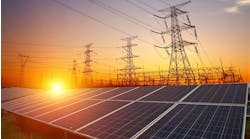Scale Microgrids, Captona Close Financing on Community Solar, Microgrid Portfolio Coast to Coast
Scale Microgrids and private investment partner Captona have closed the funding round on a series of community solar and microgrid assets in New York and California.
The closing of the funding deal with Captona comes as all of the Scale-developed projects have completed construction and been placed into service. Scale Microgrids will own, operate and maintain the projects.
“Captona’s partnership helps Scale unlock value in this portfolio,” Julian Torres, chief investment officer at Scale Microgrids, said in a statement. “By closing this transaction, we have been able to take full advantage of the new opportunities to monetize investment tax credits under Section 6418.”
In April, the U.S. Internal Revenue Service and the Treasury Department issued final regulations for energy tax credit transfers under Section 6418, which was added to the Internal Revenue Code as part of the Inflation Reduction Act (IRA) of 2022.
Previously, clean energy tax credits could only be used by taxpayers that owned the projects generating the credits. Section 6418 created a marketplace for tax credit transfers to third parties, according to legal analysis of the code.
“Captona is thrilled to complete yet another investment through our rapidly expanding preferred equity strategy,” CEO Izzet Bensusan said. “This portfolio of microgrids and community solar projects provide reliable, sustainable energy solutions that enhance energy independence and grid resilience.”
Scale Microgrids is increasingly turning to community solar to diversify its offerings and create more optionality and value for microgrid customers, according to reports.
In January, the developer announced a partnership with developer Gutami on 500 MW in community solar projects in California. That program eventually could include a minimum of four hours of energy storage capacity in pairing with the solar projects, according to reports.
The National Renewable Energy Laboratory has reported 7.3 GW of installed community solar projects nationwide as of December 2023, with another 6.9 GW in projects awarded for potential future deployment. Research firm Wood Mackenzie forecasts that existing community solar markets could increase by 8% annually through 2028.
For end users, community solar offers an option for those who want to utilize renewable energy but cannot afford residential rooftop installations or do not benefit directly from more remote utility-scale projects. Community solar is more localized and offers subscriptions to the carbon-free generation.
Many of the IRA’s tax incentives offer credits to projects less than 5 MW. This has helped attract investment from both utilities and outside developers.








